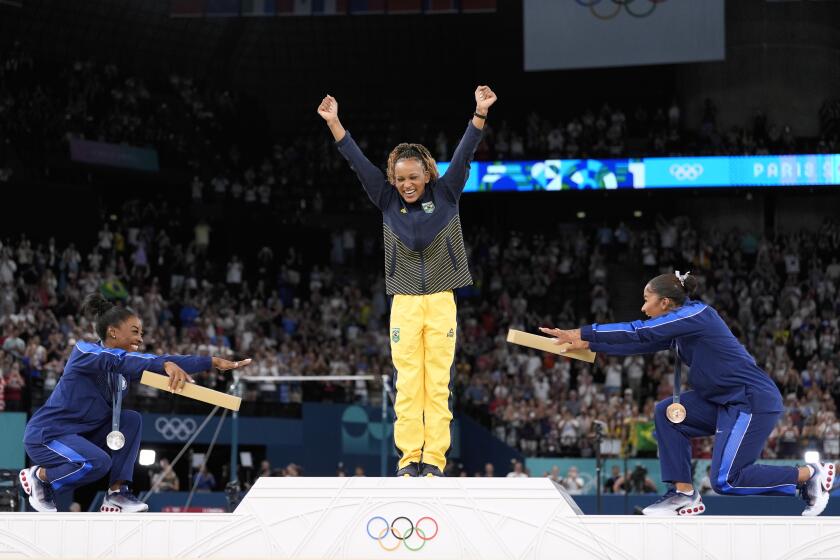A LOOK AT THE OTHER SPORTS...
International Archery Assn. (FITA) officials may soon change the format of their competition in an attempt to raise the consciousness of those who think bows and arrows are more for Indian Guides than Olympic athletes.
After receiving only one spot of Olympic game coverage last summer, officials wanted to somehow lure television cameras to the greensward. They think changing the scoring system might work.
Some officials want to initiate eliminations in the Grand FITA round, which is a four-day competition of 288 arrows. The distances, however, would remain the same: 30, 50, 70 and 90 meters for men; 30, 50, 60 and 70 meters for women.
Archers currently compete for four days, with the highest accumulative score winning.
The plan, designed by FITA President Francesco Gnecchi-Ruscone, will come to vote at the FITA Executive Council meeting in October at Seoul, South Korea.
If passed, the first three days of shooting will serve as elimination rounds. By the final day, only six men and six women archers will remain in competition for medals.
Unlike the present format, archers will start the final day with a score of zero. They will shoot nine arrows at each of the four distances, ending with the farthest. Officials expect this change to enliven a sport where the winner is often known after two days of shooting. Last summer, Darrel Pace, Olympic gold medalist, built a 40-point lead after two days, and left little doubt as to whom the champion would be.
Officials also want to implement a sudden-death tiebreaker, which they claim would add to the drama. Ties are decided by the number of shots in the 10-ring, then if still tied, by the number of shots in the 9-ring, and so on. Judges take about a half hour after the competition to tally the results under the present format. A sudden death would offer instant results, which is more palatable for television.
An ABC television spokesman, however, said archery stands little chance of receiving more coverage. He said archery received little coverage because the sport is not popular in the United States.
“It can be covered visually, but it works better with highlight coverage,” he said. “I don’t see us putting it on the air for a half hour at a time.”
He also said that a change in the scoring system probably would not affect ABC’s decision to cover it. Still, the proposed change could make archery more interesting to spectators, FITA officials claim.
“It will be a pressure situation all the way through,” said John Williams, 1984 U.S. Olympic coach. “The FITA round has been designed for archers. It has been that way for 15 years. Maybe this won’t be as good for archers. Maybe it’ll take a different type of archer to last.”
Though the Games failed to elevate archery’s status to a popular amateur sport, it did help increase membership of the U.S. National Archery Assn.
Don Rabska, director the Olympic archery competition, said that U.S. membership has increased by 15% to 20%. He also said the 130 participating countries in the Games last summer was a marked increase over past Olympics. The highest total of countries before 1984 was 97 in 1972.
With worldwide interest on the incline, the United States may see an end to its domination, Williams said.
“It won’t get any better, it could get worse,” he said.
Pace and Rick McKinney, 1984 silver medalist, plan to continue through 1988. Pace also won the gold medal in 1976, when McKinney finished fourth.
Williams also said he is counting on the juniors, particularly Jay Barrs of Arizona State, who finished second to McKinney at a National Sports Festival qualifier by 20 points. Rob Nicholson, 17, of Iowa, is another youngster Williams expects to make a mark on the international scene.
The American women, who failed to win a medal last summer, are struggling to find a consistent archer. Williams said the two with the best chance at competing internationally are Becky Legitt and Trina King.
More to Read
Go beyond the scoreboard
Get the latest on L.A.'s teams in the daily Sports Report newsletter.
You may occasionally receive promotional content from the Los Angeles Times.







